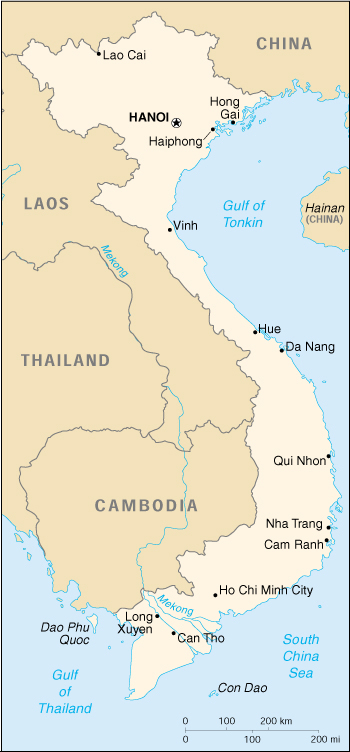

Status Quo Side: Vietnam
Non-Status Quo Side: China
Region: Pacific, East Asia & SE Asia
Conflict Type: Interstate
Issues in Dispute: Ethnic
China, whose relations with Vietnam were historically bad, backed Hanoi in its war with first France and then the US, but in 1975 suspended aid to Vietnam. By 1978 Vietnamese nationalized trading, enforced citizenship requirements and forced migration to new economic zones were adversely affecting ethnic Chinese. Refugee flows to China increased dramatically, provoking Chinese protests. Disputes between Vietnam and Cambodia (temporarily named Kampuchea) also increased, China and the US supporting the Kampuchean position. On November 3, Vietnam signed its first friendship treaty with the USSR. On December 15, the US and China announced normalization of relations.
Vietnam backed an 'indigenous' revolt in Kampuchea against Pol Pot, the murderous communist ruler, and with 50,000 troops (ultimately 200,000) took Phnom Penh within 10 days. By January 1 Chinese troops were reported massing on the Vietnamese border. Both sides soon charged border violations and raids. The reported massing of Vietnamese troops near the border led to clashes. Chinese Vice Premier Deng Hsaio-Ping, during a US visit January 29-February 5, hinted at retaliation against the Vietnamese. Both the US and USSR sent naval forces to the area. Vietnam asked for international assistance.
China entered Vietnam in strength to "teach Vietnam a lesson". Casualties on both sides were reported high. International opinion generally condemned China. The US was accused by the USSR, Taiwan, and Vietnam of tacit backing of China. Vietnam requested UNSC action, but the Council temporized. Soviet aid to Vietnam increased. Fighting continued sporadically until mid-March.
Peace talks began, but remained deadlocked during negotiations from April-July. UNSYG Kurt Waldheim facilitated a POW trade. Accusations by both sides focused on border raids and the plight of ethnic Chinese in Vietnam.
China reported a Vietnamese border attack and massing of Vietnamese troops. From February thru December 1980 Vietnam charged Chinese aggression. China rejected Vietnamese offers to resume stalled peace talks. Vietnamese attempts to eradicate Kampuchean rebels on the Thai-Kampuchean border were met by Chinese military activity on Vietnam's northern border.
After a decade of competition over Cambodian rule and the potentially oil-rich Spratly Islands [see SPI], China and Vietnam backed a UN plan for pacifying Cambodia, and held secret meetings to reconcile their differences. Trade having increased by 60% in 1995, agreement was reached in December to restore rail links and boost trade and investment. Each side renewed a pledge to resolve territorial disputes peacefully.